
B2. Pilot building and operation. (7)
Pilot building of the bioreactor will be carried out in REYDESA´s facilities in Spain and 10-20 semi-industrial batches will be developed.
B2.3. Pilot set-up and operation (3)
The adaptation of microorganisms has been carried out at 10g/L of the non-metallic fraction of PCB to the microorganisms Acidithiobacillus ferroxidans, in the 882 medium.
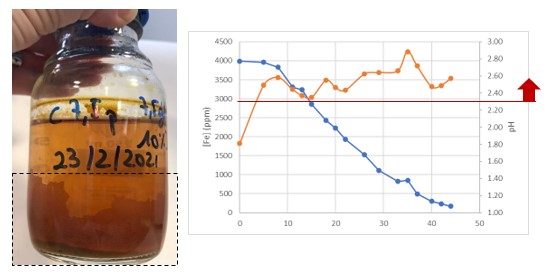
A precipitate formation has been observed on the walls of the flasks, showing the formation of jarosite, a compound made up of iron, when the pH is greater than 2.3. By precipitating iron, the concentration of iron in the medium, necessary for the metabolism of microorganisms, is reduced and, therefore, their yield for the bioleaching of metals is reduced.
After the tests carried out, it is concluded that the pH control at 2 produces an improvement in performance, by avoiding the precipitation of iron, and that it is not necessary to add a greater amount of iron to the medium, since no notable influence has been detected on the result of the tests carried out.
Different adaptation steps have been tested, with greater and lesser number of steps, and the results show that the intermediate conditions are the most optimal for the adaptation of these microorganisms to this type of waste.

With these optimal conditions, the microorganisms have been adapted to 10 g/L of non-metallic fraction of PCB, and they have been adapted with this S/L ratio to a higher volume, until reaching the 50L necessary for the tests in the pilot equipment.
Tests on 50 L in the pilot plant have been carried out, in which temperature control has been maintained at 30 ºC, pH constant at 2, and regular measurements of the metal content in the liquid have been made, by taking samples and analyzing them at the ICP-OES. The metals that have been monitored are Al, Cr, Fe, Ni, Cu, Zn, Ag, Sn, Au and Pb.
A colour change has been observed in the middle, between the beginning and the end of each experiment, which can be seen in the figure.
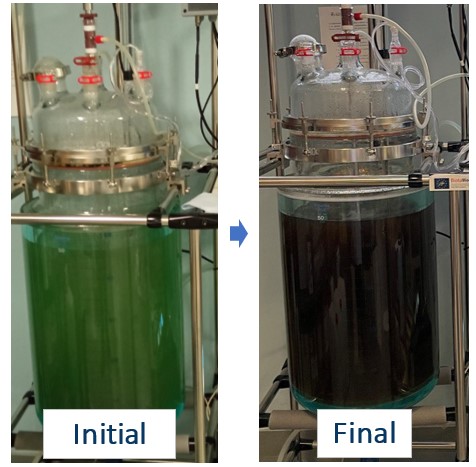
Three experiments have been carried out in 50L, and the main conclusions drawn are the following:
- Analyzing the results of the metals present in an amount greater than 6% in the residue, an average copper extraction of 90% is obtained, which in some cases even exceeds 94%. In the case of Aluminum, the efficiency reaches values of 80%.
- In the case of metals with less presence in the waste (<1%), Nickel and Zinc show extraction values of 56 and 84% respectively, so it is estimated that these microorganisms could be used to extract these metals from other residues that contain them in higher concentration.
- Gold leaching from the residue is not detected, and silver extraction is less than 4% in all cases. It is concluded that other types of microorganisms are necessary to extract these metals, but, in addition, their low concentration in the residue makes their recovery difficult with this method.
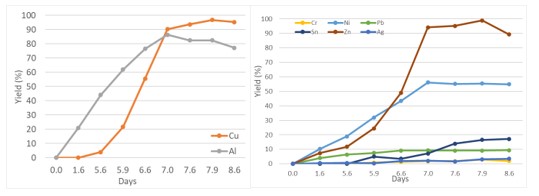
Figure. Results obtained in one of the experiments.
B2.3 Pilot set-up and Operation (2)
After the adaptation process, experiments have been defined in order to increase knowledge of the optimized parameters for the tests in aerobic conditions:
- Directly perform progressive increase of volume in the tests, reaching 50L.
- Increasing concentration of rejected fraction of PCB from 1% to 10% in 250 mL (ongoing).
- Expected time for maximum leaching.
- Influence of adaptation steps in 10g PCB/L.
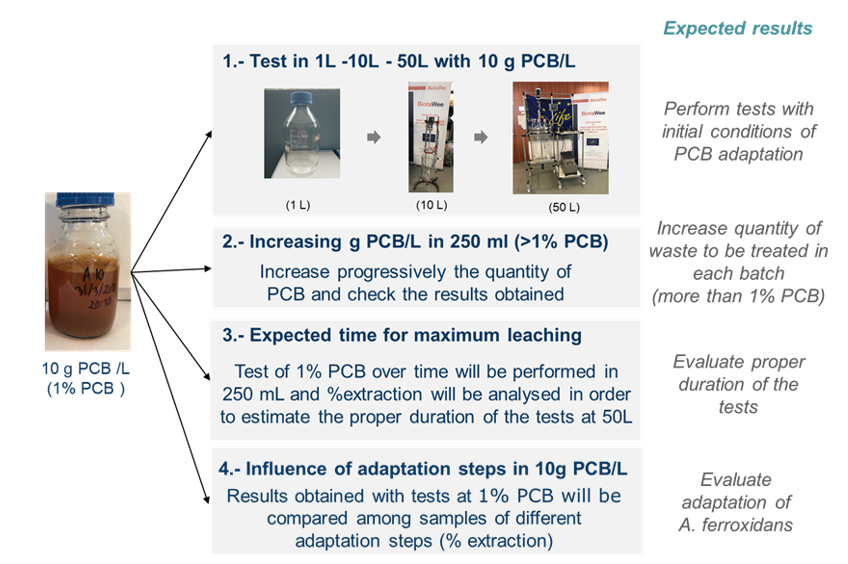 Figure. Tests performed in aerobic conditions and expected results
Figure. Tests performed in aerobic conditions and expected results
It has been demonstrated in these tests that the precipitation of jarosite is avoided when controlling the pH, minimizing the losses of iron in the dissolution, increasing the performance and also reducing the time for the tests. Tests with improved conditions have been started, as can be observed in the figure.
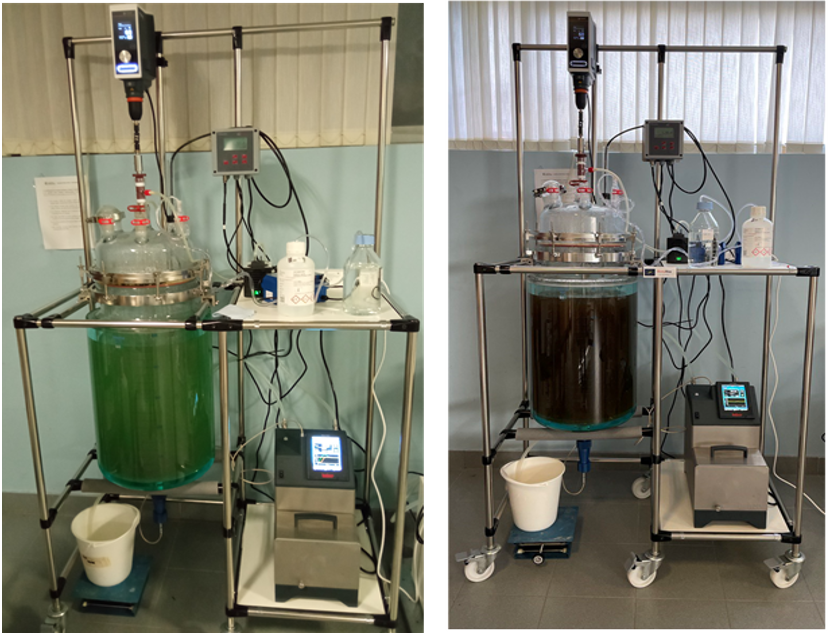 Fig. Evolution of the tests in the 50 L reactor.
Fig. Evolution of the tests in the 50 L reactor.
The results obtained are still being evaluated, and these experiments will be repeated, in order to extract robust outcomes from the tests.
B2.3. Set-up and Operation
Before the adaptation of the microorganisms, a series of processes to adapt the laboratory media to the work procedures in bioleaching were carried out:
- The development of a safety and health protocol has been developed
- Sterilization techniques for the media have been studied
- Study of the microorganisms that could be present in the reaction conditions that can compete with the Acidithiobacillus ferroxidans.
- Non-metallic part of PCB pre-treated with saturated NaCl and further washed
- Test equipment performance during scaling up (250 ml - 1 L - 10 L - 50 L)

Non-metallic part of PCB pre-treated with saturated NaCl and further washed
Adaptation and scaling up process of Acidithiobacillus ferroxidans with the non-metallic fraction obtained after mechanical treatment of PCBs:
The process consists in 6 steps:
- Step 1: Vials inoculation
- Step 2: Adaptation to 250 ml
- Step 3: Adaptation to PCB in 250 ml
- Step 4: Adaptation to PCB in 1 L
- Step 5: Adaptation to PCB in 10 L
- Step 6: Adaptation to PCB in 50 L
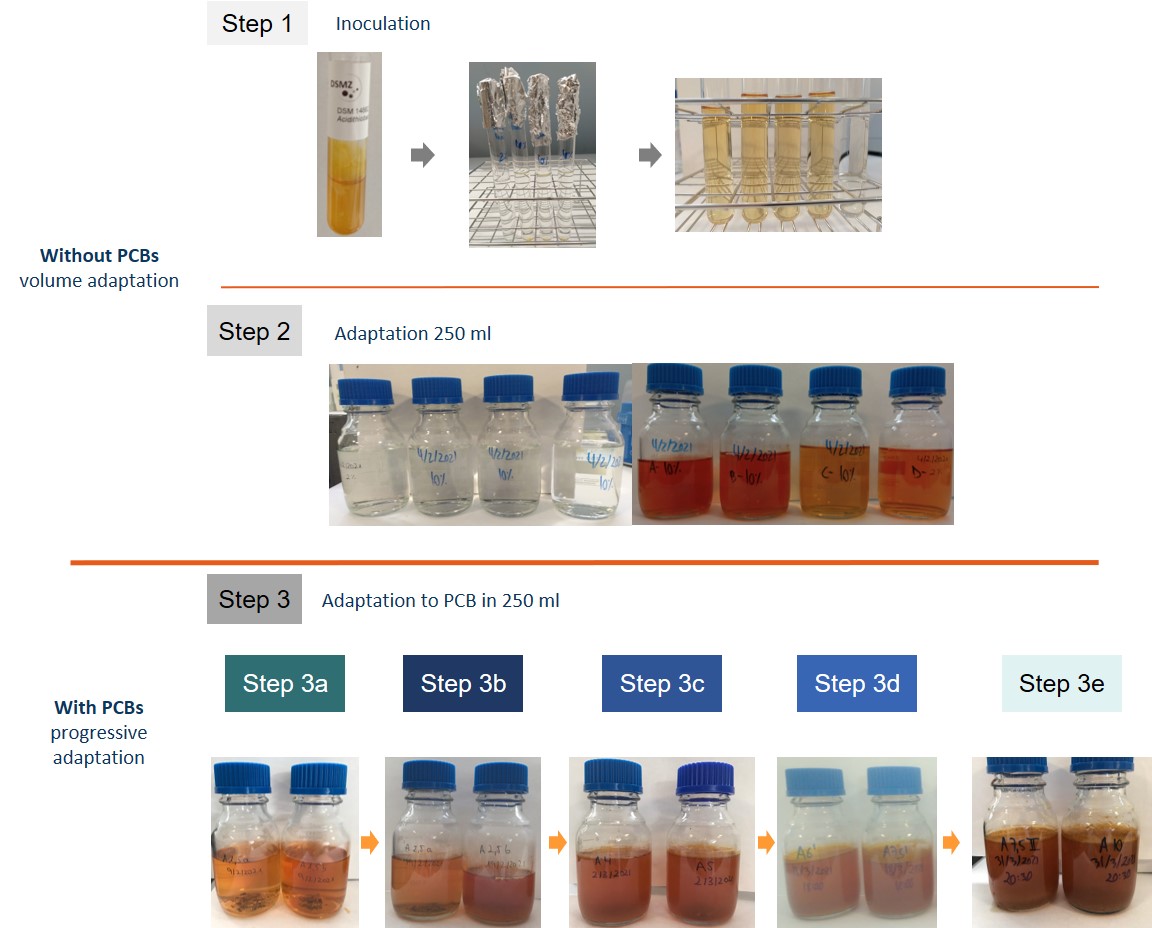
Steps 1-3 from adaptation and scaling up process.
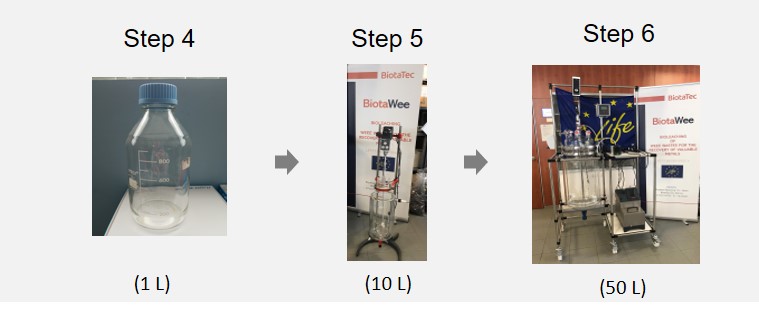
Steps 4-6 from adaptation and scaling up process.
B2.2. Pilot building and installation (3)
After tests with the 10L-reactor already owned by INATEC, equipped with sensors and agitation, it was concluded that a new reactor and chiller should be purchased, in order to improve the temperature control in this volume.
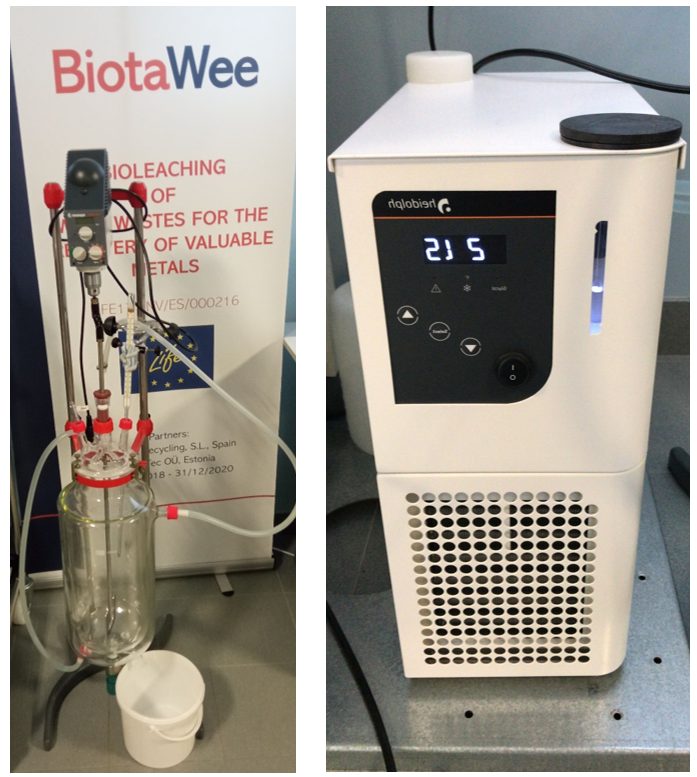 Figure. 10 L reactor and chiller for the adaptation process
Figure. 10 L reactor and chiller for the adaptation process
Additionally, in order to avoid blockages with the PCB, a specific system to open the reactor has been also included in the design.
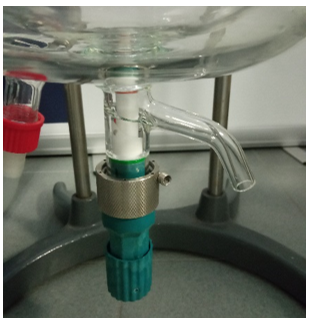 Figure. Specific discharge nozzle to avoid blockages in the 10 L reactor
Figure. Specific discharge nozzle to avoid blockages in the 10 L reactor
B2.2. Pilot building and installation.
The development of a 50 L prototype for bioleaching operations of the non-metallic fraction of PCBs after mechanical treatment by the microorganisms Acidithiobacillus ferroxidans was carried out.
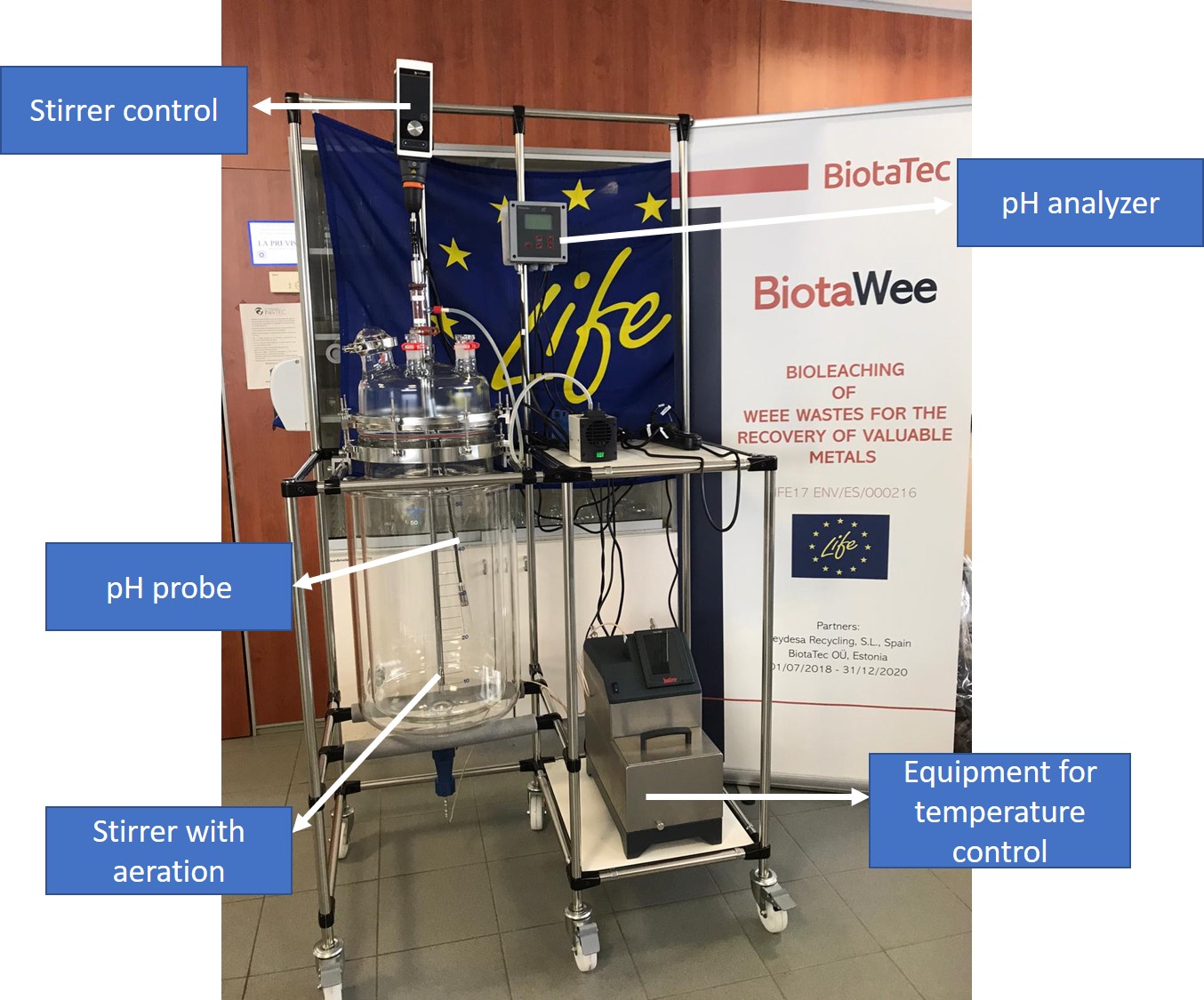
50 L prototype built for BIOTAWEE Project.
The prototype consists on the following equipment to control the operating conditions during bioleaching:
- pH analyzer that will facilitate both the supervision of the evolution of the pH of the reaction and also the possibility to the pH at a constant value.
- Stirring controller + aerated rod for controlled agitation that does not hinder the evolution of microorganisms and also incorporates aeration in the rod to improve air recirculation for the benefit of the aerobic reactions that take place.
- T controller that allows us a precise control which is of great importance for the reactions and survival of microorganisms.
B2.2. Pilot building and installation.
The design of the required technology to reproduce the process has been carried out, increasing the scale to a capacity of 50L. Providers have been contacted and the revision of bids is nearly completed.
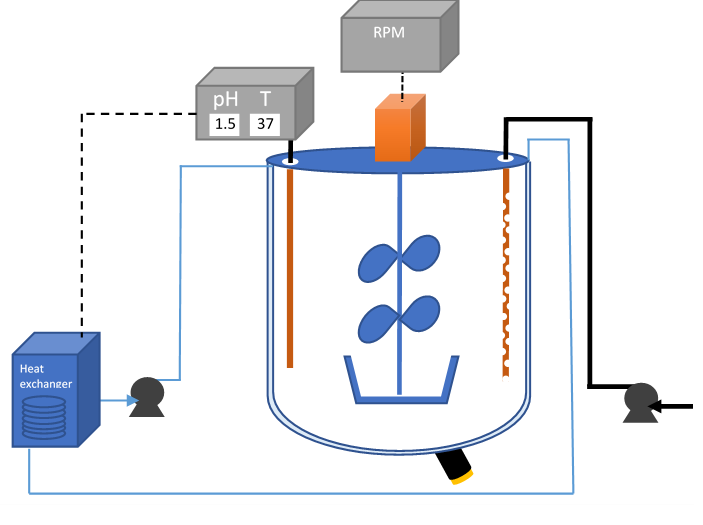
Design of the required technology for the 50 L reactor.
In the meantime, the revision of the laboratory material needed for the test has been performed. Before starting the test on a 50L reactor, the consortium has to be previously adapted to the PCB in flasks of 250ml, increasing the volume progressively, being the previous volume to the 50L-reactor a 10L-reactor already owned by INATEC. This reactor, equipped with sensors and agitation, has been checked and the reagents and material required for working with microorganisms have been listed.
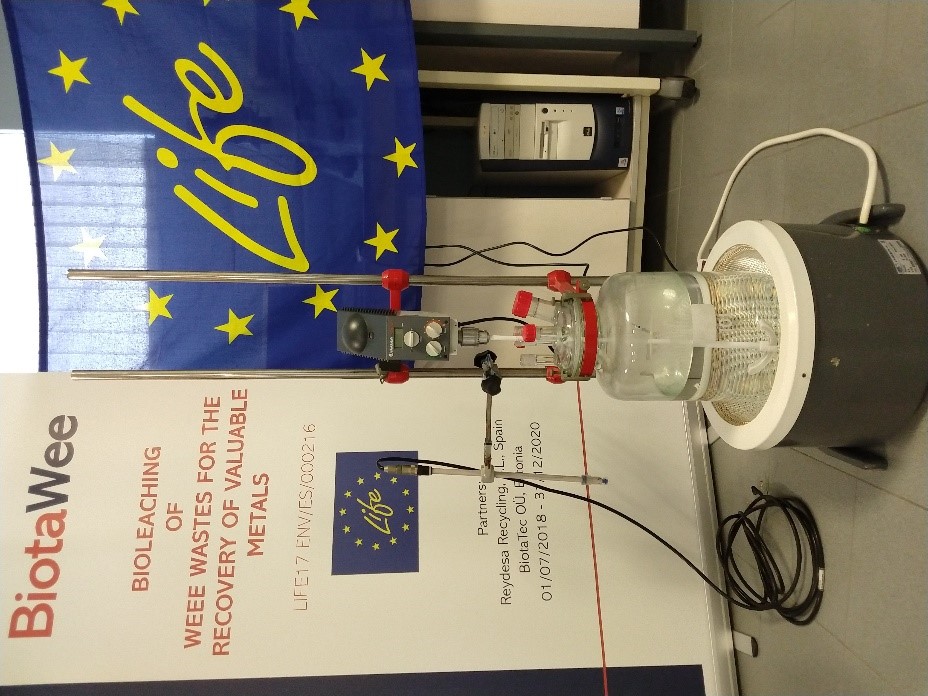
Test performed in the 10 L reactor in order to check the performance.
B2.1. Supply/sample preparation.
Processing PCBs includes several steps of crushing and separation until a non-metallic fraction to test by bioleaching technology is obtained. Next figure shows the three steps of the global process where the material has to pass until the final fraction is achieved:

Material through each step of the process.
1st STEP: The process begins with the crushing of the material in a shredder.
2nd STEP: The material is introduced in the mill during continuous cycles.
3rd STEP: The aim of this step is to separate the metallic fraction from the non-metallic one.
MATERIAL FOR BIOLEACHING: The non-metallic fraction obtained in the previous step is the one selected to be used in the bioleaching process that will be carried out by BIOTAWEE consortium.
© Copyright 2019 - Designed by COASER IT



